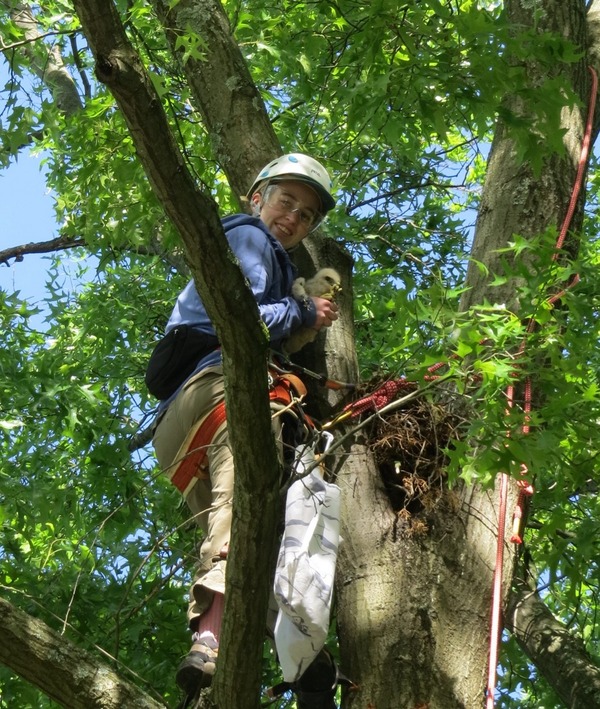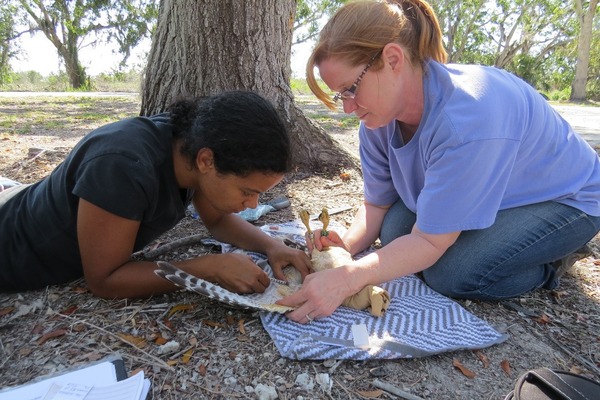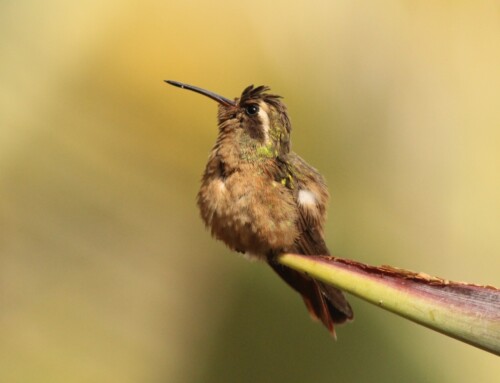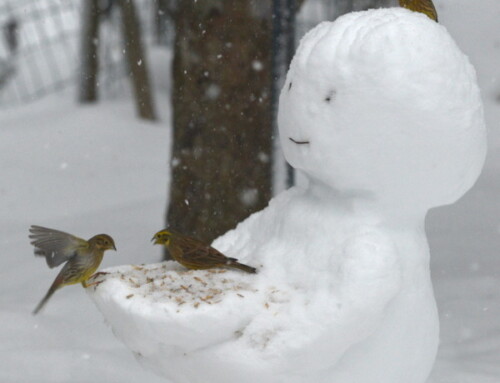 LINKED PAPER
LINKED PAPER
Genetic differentiation of the South Florida Red-shouldered Hawk (Buteo lineatus extimus) from the nominate subspecies (Buteo lineatus lineatus). Dykstra, M.A., Marain, D.M., Wrona, A.M., Dykstra, C.R., Farrington, H.L., Johnson, J.A., Wegman, A.R., Simon, M.M., & Hays, J.L. 2023 Journal of Raptor Research. doi: 10.3356/JRR-22-83 VIEW
What makes a population distinctive enough to be declared a subspecies or a species? These designations are often used to decide which populations warrant conservation efforts, so the answer to that question can be critically important. Many subspecies were described decades or even centuries ago using the tools available then: plumage and morphological characteristics. But modern molecular technologies have upended older taxonomies and also generated controversy around the use of subspecies designations in conservation, because genetic investigations often fail to find differentiation between subspecies.
The Red-shouldered Hawk (Buteo lineatus) is a wide-ranging North American raptor with either four or five subspecies (Dykstra et al. 2020), depending on the authority. The south Florida subspecies (Buteo lineatus extimus) is distinctively paler and consistently smaller than the other subspecies. South Florida Red-shouldered Hawks nest in places that can be shockingly different from those used by the other subspecies. Researcher Donna Marain, of Florida International University, found them nesting in a lone palm tree and on utility poles, surrounded by nothing but sawgrass wetlands, with not another tree in sight. They also use urban/suburban habitats with more trees, nesting near busy shopping malls, along major highways, or on college campuses. The northern subspecies are typically described as forest raptors, but they also coexist quite well with humans and can nest in urban/suburban landscapes, as long as there’s some forested area nearby (Dykstra et al. 2001, 2019, 2021). Despite the abundance of the South Florida hawks, they have been surprisingly little studied (Marain 2023).

Figure 1 Madeline Dykstra taking an Eastern Red-shouldered Hawk from the nest for banding and blood sample collection © Cheryl Dykstra.
Genetic differentiation between the South Florida Red-shouldered Hawks and two populations of Eastern Red-shouldered Hawks (Buteo lineatus lineatus) in Ohio was recently evaluated by a team of researchers from Calvin University (Grand Rapids, Michigan, USA), the Cincinnati Museum Center (Cincinnati, Ohio, USA), and other institutions. The researchers climbed to nests to collect blood samples from nestlings – a task that is made more challenging by the defensive parent hawks, which frequently dive at the climbers and occasionally strike them.
To trap adult hawks for blood-sampling, the team used bal chatri traps or dho gaza nets surrounding a mechanised, taxidermied owl.

Figure 2 Donna Marain and Ann Wegman collecting a blood sample from a South Florida Red-shouldered Hawk © Cheryl Dykstra.
The researchers found significant genetic differentiation between the South Florida and Eastern populations, based on analysis of 11 microsatellite loci. Standardised statistical tests designed to classify similar individuals into clusters indicated there were two clusters – birds from the two Ohio populations formed a single cluster and those from Florida formed a second cluster, which further supported the genetic distinctiveness of the South Florida subspecies.

Figure 3 Standardised genetic distance principal coordinate analyses (PCoA) using pairwise genetic distances among Red-shouldered Hawk individuals based on the number of alleles shared and their respective heterozygosity levels. Axis labels represent the first two coordinate axes with their respective explained variation. The “Cincinnati” and “Hocking” populations were located in southern Ohio, USA, approximately 180 km apart. The “Florida” population was located in southern Florida in regions surrounding and including the city of Miami.
Somewhat surprisingly, the two Ohio populations, which were located in rural and suburban areas about 180 km apart, also showed some significant differentiation from each other, though they were more similar to each other than to the South Florida birds.
The substantial differences between the South Florida and other subspecies suggest this population warrants attention and possibly management as a distinct conservation unit, whether as a subspecies or full species. Unfortunately, the South Florida hawks also face important potential threats including habitat loss and exposure to rodenticides. “Many South Florida Red-shoulders in the Miami region have been exposed to second generation anticoagulant rodenticides, based on liver samples of birds that were admitted to wildlife rehabilitation centers,” says Donna Marain. Habitat conversion and loss is another critical threat in the Miami area and more research is needed to determine whether the South Florida Red-shouldered Hawk population is increasing, stable, or declining in the rapidly urbanising portions of its range.
References
Dykstra, C.R., Hays, J.L., & Crocoll, S.T. 2020. Red-shouldered Hawk (Buteo lineatus), version 1.0. In Birds of the World (A.F. Poole, Editor). Cornell Lab of Ornithology, Ithaca, NY, USA. VIEW
Dykstra, C.R., Hays, J.L. Daniel, F.B., & Simon, M.M. 2001. Home range and habitat use of suburban Red-shouldered Hawks in southwestern Ohio. The Wilson Bulletin 113:308-316. VIEW
Dykstra, C.R., Hays, J.L., Simon, M.M., Wegman, A.R., Dykstra, L.R., & Williams, K.A. 2021. Habitat and weather conditions influence reproductive rates of suburban and rural Red-shouldered Hawks Buteo lineatus. Ibis 163:623-640. VIEW
Dykstra, C.R., Hays, J.L., Simon, M.M., Wegman, A.R., Williams, K.A., & Dykstra, L.R. 2019. Dispersal and survival of Red-shouldered Hawks banded in suburban southern Ohio, 1996–2018. Journal of Raptor Research 53:276-292. VIEW
Marain, D. 2023. Breeding season diet of the red-shouldered hawk (Buteo lineatus extimus) in southern Florida. Wilson Journal of Ornithology 135:74-79. VIEW
Image credit
Top right: South Florida Red-shouldered Hawk © Cheryl Dykstra.
If you want to write about your research in #theBOUblog, then please see here.




